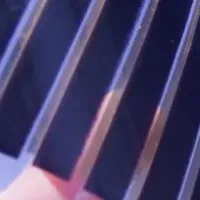
Huawei Unveils Key Trends Shaping the Future of Solar Energy in 2025
Insights into Huawei's FusionSolar 2025 Trends
In a recent event held in Shenzhen, China, Huawei Digital Power launched its Top 10 Trends in FusionSolar for 2025, themed around "Integrated Innovation for an Intelligent Future." The aim is to harness photovoltaic (PV) technology to become the predominant source of energy, supporting global efforts to transition towards renewable energy solutions.
An Unprecedented Time for Renewable Energy
As the president of Smart PV ESS Product Line, Steven Zhou, highlighted, favorable renewable energy policies in 2024 position the PV and energy storage sector for positive growth in 2025. This period is marked by a significant transition in global energy strategies, presenting unparalleled opportunities for companies in the sector.
The 10 Key Trends
Huawei has meticulously identified ten crucial trends that will shape the future of the solar industry:
1. Acceleration of PV as the Main Energy Source: Comprehensive advancements in renewable energy generator technology allow for rapid growth in PV as the central energy supply.
2. All-Scenario Grid Forming: The integration of ubiquitous energy storage systems is vital for maintaining the stability of new power systems, supporting the generation, transmission, and distribution processes.
3. Enhanced ESS Safety: A robust safety infrastructure is essential for promoting high standards within the energy storage systems. This includes guaranteeing no fire hazards and ensuring reliable recovery from faults.
4. Full-Lifecycle Intelligence: Future renewable power plants will operate autonomously throughout their entire lifecycle, increasing efficiency and reducing human intervention.
5. High Frequency and Density: Advancements in third-generation semiconductors will allow for higher power density in power electronic converters, thus enhancing the overall performance of PV and energy storage systems.
6. High Voltage and Reliability: Utilizing high voltage in applications will help to decrease the levelized cost of energy (LCOE) for PV and energy storage systems, ensuring better reliability and safety.
7. Development of 100% Renewable Microgrids: Economically efficient and stable renewable microgrids will become the preferred energy solution in areas struggling with electricity access.
8. Synergy among PV, ESS, Chargers, and Loads: The power distribution networks will gain added flexibility, facilitating the increased integration of green energy across various industries.
9. Community Energy Sharing: This concept evolves from individual self-consumption to a community-focused model, enhancing the distribution and coordinated usage of renewable energy among residential areas.
10. Flexible Business Model Adaptation: Integrated platforms will accommodate diverse business models, contributing to enhanced operational benefits.
A Vision for the Future
Through the advancements identified in these trends, Huawei FusionSolar underscores its commitment to working collaboratively with global partners to foster the growth of the PV and energy storage industries. The overarching goal is to establish PV as the energy source of choice for homes and businesses alike, ultimately leading to a sustainable, greener future for everyone.
The trends presented by Huawei are revolutionary, and this approach may well redefine the landscape of the renewable energy market. As the world moves towards cleaner energy solutions, Huawei's FusionSolar initiative aims not just to participate in but to lead this transformation.
Topics Energy)










【About Using Articles】
You can freely use the title and article content by linking to the page where the article is posted.
※ Images cannot be used.
【About Links】
Links are free to use.